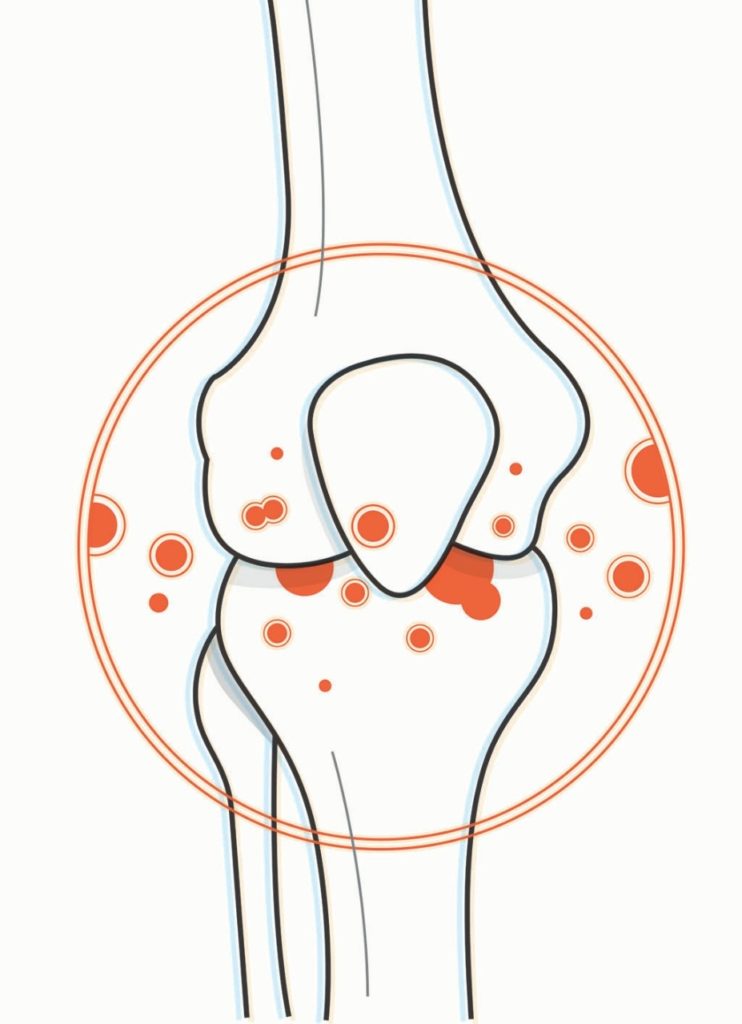Banishing osteoarthritis

Immunologist William Robinson, MD, would love to figure out how to prevent people from getting osteoarthritis — one of the world’s most common causes of pain and immobility. And he has a lead.
He and a group of colleagues recently found a link in mice between a class of immune cells — called mast cells — and the development of the condition. The discovery is unlikely to lead to a cure, but it gives researchers a potential way to design drugs to prevent it.
Mast cells produce the histamine and other molecules responsible for allergy symptoms, including hay fever and food-triggered anaphylaxis. But they also produce a degradative protein, tryptase, which can rip up collagens and other molecules that form the cartilage in joints, causing joint swelling and stiffness.
In a study published May 14 in eLife, the scientists discovered that blocking mast-cell activation or disabling tryptase protected mice from developing osteoarthritis. The results were supported by findings in human cells and tissues.
By age 60, the chances of humans exhibiting osteoarthritis symptoms exceed 30%. By age 80 or 90, the risk is nearly 100%.
“Almost all of us will ultimately suffer from osteoarthritis if we live to be old enough,” said Robinson, professor of immunology and rheumatology and the study’s senior author.
He wants to identify drugs that have excellent safety profiles and can prevent, rather than treat, osteoarthritis. “These drugs will have to be safe enough for large numbers of people to take for decades without problems,” he said.
